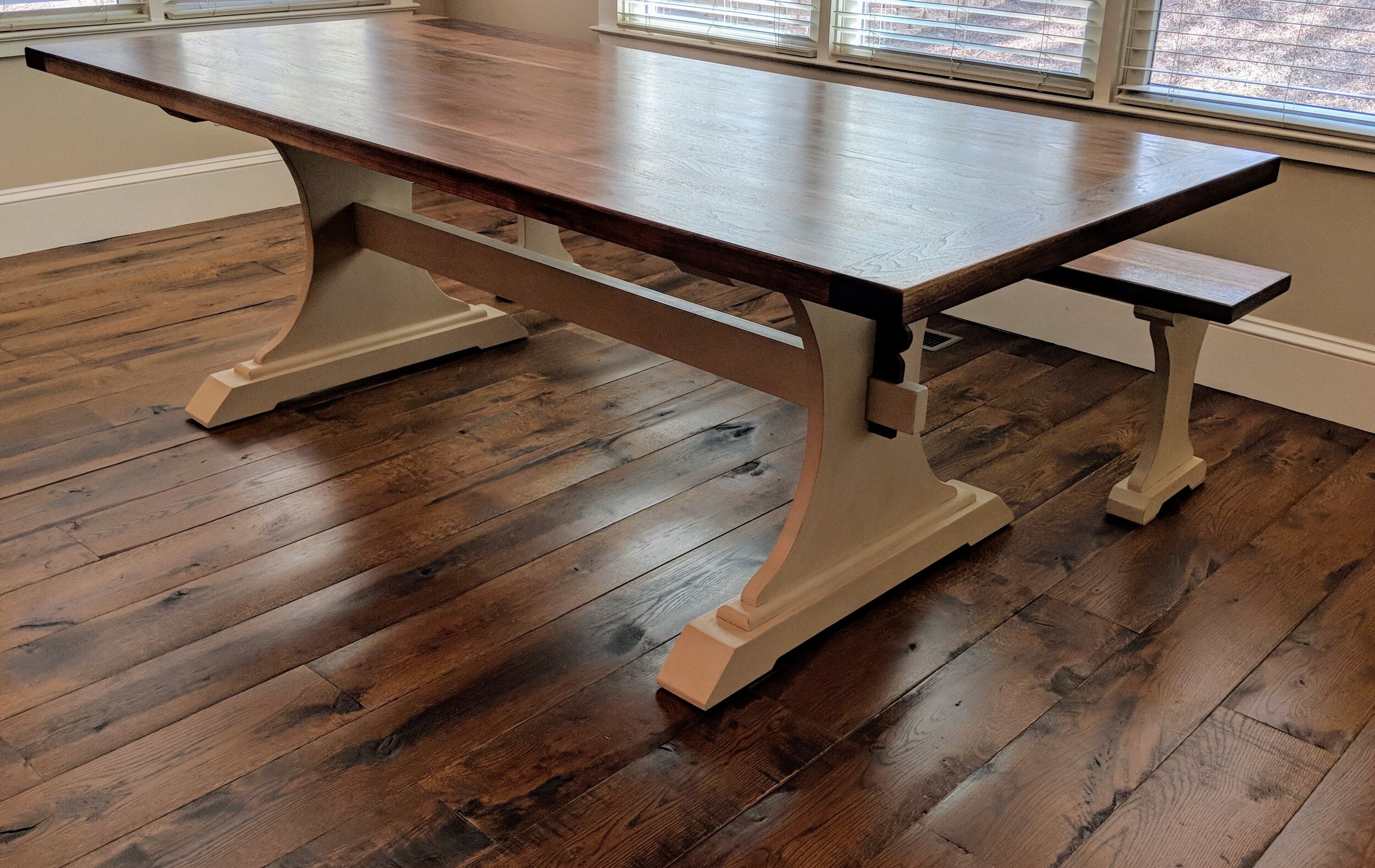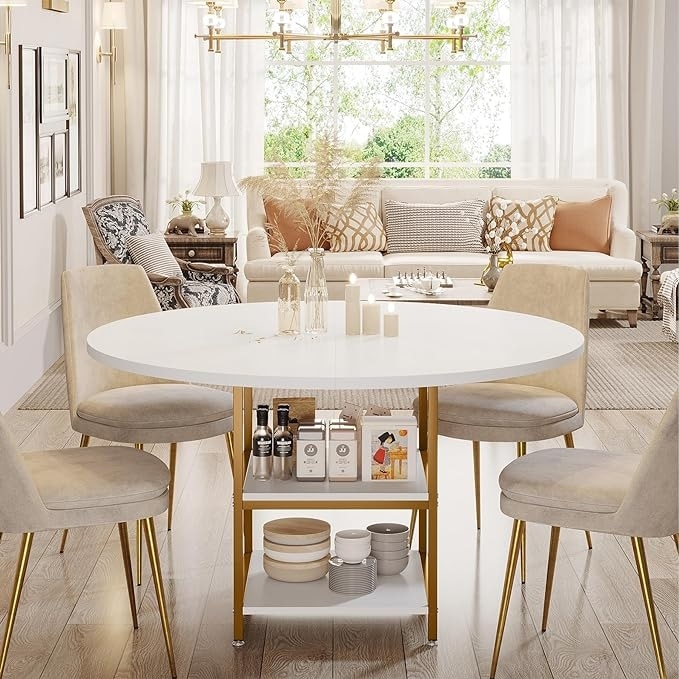How Dining Room Table Legs Can Change the Entire Aesthetic of Your Room
How Dining Room Table Legs Can Change the Entire Aesthetic of Your Room
Blog Article
Just How to Choose the Perfect Dining-room Table Legs for Your Home Decor
Picking the excellent eating room table legs is a nuanced procedure that needs careful consideration of various components, including your area restraints, visual preferences, and practical demands. The interaction between designs, dimensions, and products can dramatically affect the ambiance of your eating location, making it crucial to approach this choice methodically.
Assess Your Eating Area
Assessing your eating area is important for selecting the right table legs that match both aesthetic appeals and functionality. Begin by gauging the dimensions of your dining area, consisting of ceiling elevation, flooring area, and proximity to various other furniture. This details will aid identify the proper size and elevation of your dining table, which straight affects the option of table legs.
Next, take into consideration the style and design of your eating room. An open-concept style may profit from table legs that use visual lightness, such as slim metal or acrylic choices. Alternatively, an extra traditional setting could ask for sturdy wooden legs that supply a feeling of durability.
Review the existing shade combination and materials in your dining area. Harmonizing the table legs with these elements produces a cohesive look that enhances the overall decor.
Ultimately, a detailed evaluation of your eating room will certainly direct you in making a notified decision, ensuring that your table legs not only boost the aesthetic appeal but additionally offer sensible objectives.
Consider Your Style Preferences
When choosing dining-room table legs, it is vital to assess your individual style preferences, as they considerably influence the total aesthetic of your eating area. Your choice of table legs can either enhance or contrast with existing decoration, making it essential to straighten them with your preferred indoor style theme.
If your home leans in the direction of a contemporary aesthetic, take into consideration streamlined steel or minimalist wood legs that offer a tidy, clean appearance. For a much more conventional approach, elaborate wooden legs with complex carvings can include a touch of style and class. Industrial styles profit from durable, resources such as redeemed wood and metal mixes, reflecting a sturdy charm.
Furthermore, farmhouse and rustic designs typically favor strong, chunky legs that stimulate a sense of warmth and convenience. Conversely, if your decor is eclectic, you could choose unique forms or a mix of materials to produce visual passion.

Evaluate Material Options
The choice of material for eating room table legs plays a critical function in both longevity and aesthetic appeal. Common materials consist of timber, steel, and composite options, each offering distinct qualities that can influence the overall look and durability of your table.
Wood is a traditional option, understood for its heat and adaptability. Woods like oak and walnut provide extraordinary stamina and can be completed in different spots to match any type of design. Nevertheless, softwoods like want are more prone to scrapes and dents, making them less suitable for high-traffic locations.
Steel legs, typically crafted from steel or aluminum, exhibit modernity and industrial appeal. They are immune and extremely durable to put on, making them appropriate for family members with youngsters or regular gatherings (dining room table legs). In addition, steel can be finished in numerous shades, boosting the customization opportunities
Composite materials, such as MDF or laminate, deal cost and diverse layouts. While usually much less resilient than strong timber or metal, they can still supply a trendy look and are commonly simple to maintain.
Inevitably, the material you pick ought to straighten with your way of life, visual choices, and the degree of usage your table will experience.
Determine Elevation and Dimension
Picking the appropriate elevation and size for your eating room table is essential for both performance and comfort. The common height for eating tables generally varies from 28 to 30 inches, allowing adequate legroom for most individuals when seated. However, it is crucial to consider the dimensions of your eating space and the kinds of chairs you intend to use.

In addition, think about the percentages of your eating space. A bigger table in a large location can produce a grand atmosphere, while a smaller table works well in more intimate settings. Ultimately, the right height and dimension will certainly integrate with your overall design and enhance the dining experience for you and your guests.
Explore Customization Opportunities

Additionally, the layout of the legs can be tailored to fit numerous designs, such as rustic, modern, or industrial. Tapered legs can evoke a mid-century modern-day feeling, while chunky, block-style legs might reverberate with conventional or farmhouse style.
Property owners can likewise explore shade coatings, from natural wood spots to paint, allowing them to match or see comparison with the table top and bordering style.
Additionally, leg height can be adapted to accommodate particular seating arrangements or individual choices, improving both comfort and performance.
Lastly, unique embellishments, such as makings or attractive braces, can even more individualize the table legs, making the dining experience not simply a dish but a declaration item in the home. By considering these personalization alternatives, property owners can develop a dining-room table that genuinely mirrors their individuality.
Verdict
Selecting the optimal eating room table legs requires cautious factor to consider of numerous factors, including the measurements of the eating room, style preferences, material toughness, and wanted height. Customization options better improve the ability to attain a important site natural visual that enhances the total decor. By systematically assessing these elements, property owners can make sure that the picked table legs not just accomplish useful needs yet additionally add favorably to the dining experience and ambiance of the home.
Selecting the ideal dining room table legs is a nuanced procedure that calls for mindful factor to consider of different components, including your room restraints, visual choices, and functional requirements.Evaluating your dining space is crucial for selecting the right table legs that complement both visual my link appeals and functionality.When determining dimension, determine the area where the table will be positioned to ensure it fits conveniently, enabling for at least 36 inches of clearance around the table for easy activity. A bigger table in a roomy area can develop a grand atmosphere, while a smaller table functions well in even more intimate settings.Selecting the ideal eating space table legs requires mindful consideration of numerous aspects, including the dimensions of the eating room, design preferences, product toughness, and preferred elevation.
Report this page